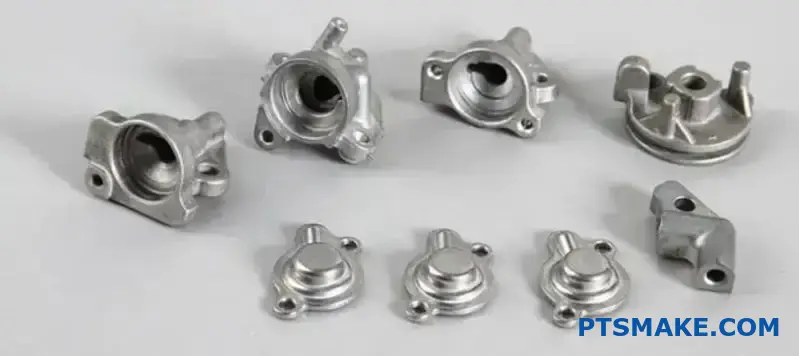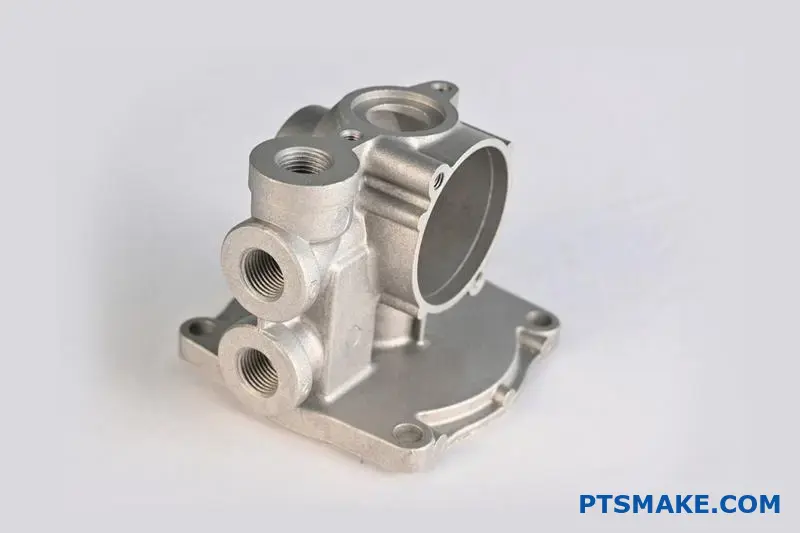Picking the wrong CNC machining manufacturer can derail your entire project timeline and budget. I’ve watched engineering teams struggle with inconsistent quality, missed deadlines, and suppliers who disappear when technical questions arise.
The right CNC machining manufacturer combines proven capabilities, quality certifications, reliable delivery schedules, and responsive communication to ensure your parts meet specifications on time and within budget.
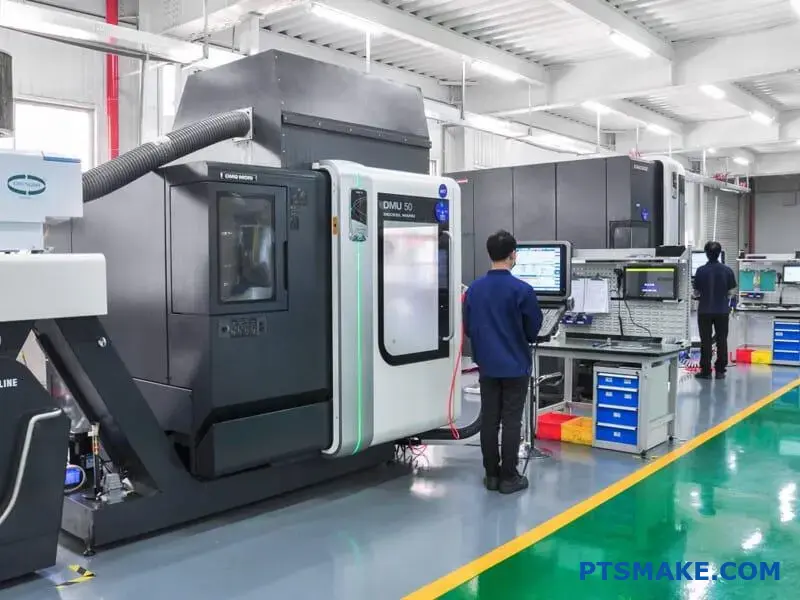
At PTSMAKE, I work with engineering teams who face this decision regularly. The manufacturers you choose directly impacts your product quality, project timelines, and overall success. This guide walks you through eight key factors that separate reliable CNC machining partners from those that create headaches. You’ll learn how to evaluate capabilities, assess quality standards, and build partnerships that support your projects from prototype through production.
Understanding CNC Machining Capabilities
Have you ever designed a complex part, only to find that manufacturing it was far more challenging or costly than anticipated? This disconnect often stems from a gap in understanding manufacturing capabilities.
Understanding CNC machining capabilities involves knowing the core processes like milling and turning, the advanced options like multi-axis and hybrid systems, and how they enable tight tolerances and complex geometries. This knowledge helps bridge the gap between design intent and manufacturability, ensuring quality and innovation.
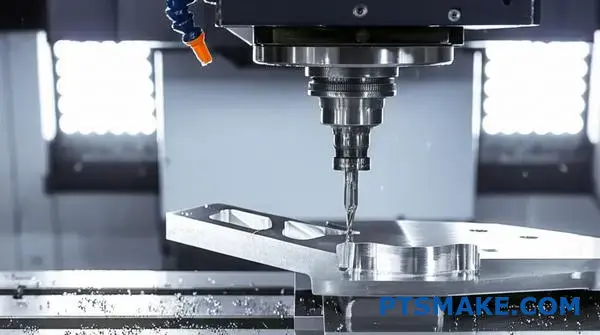
The Foundation: Milling vs. Turning
At its core, CNC machining is a subtractive process. We start with a solid block of material and precisely cut away material to create a finished part. The two fundamental methods to do this are milling and turning. Though they both cut material, their approach is entirely different, and choosing the right one is the first step toward an efficient manufacturing plan. In our projects at PTSMAKE, we often start the conversation by clarifying whether a part is "milling-dominant" or "turning-dominant" to set the right strategy from the start.
CNC Milling: Shaping with a Rotating Tool
In CNC milling, the workpiece is held stationary while a rotating cutting tool moves along multiple axes to remove material. This method is incredibly versatile, making it ideal for creating flat surfaces, pockets, slots, and complex 3D contours.
- 3-Axis Milling: This is the most common form, where the tool moves in X, Y, and Z directions. It’s perfect for simpler parts like brackets, housings, and plates.
- 5-Axis Milling: This is where things get interesting. By adding two rotational axes, the cutting tool can approach the workpiece from virtually any angle. This allows a skilled
cnc machining manufacturerto create highly complex geometries in a single setup, which drastically improves accuracy by reducing the errors that can occur when a part is manually re-fixtured. It also improves cycle times and can create smoother, more organic surfaces.
CNC Turning: Precision in Rotation
In CNC turning, the workpiece rotates at high speed while a stationary cutting tool removes material. This process is used to create cylindrical or conical parts. Think of shafts, pins, nozzles, and fasteners. A CNC lathe can efficiently produce features like grooves, threads, and tapers with exceptional precision. The principles of Geometric Dimensioning and Tolerancing1 are critical here to define the concentricity and runout of features relative to the part’s central axis.
Here’s a simple breakdown to help distinguish them:
| Feature | CNC Milling | CNC Turning |
|---|---|---|
| Primary Motion | Rotating tool, stationary workpiece | Stationary tool, rotating workpiece |
| Typical Geometries | Square/flat features, pockets, complex 3D surfaces | Cylindrical, conical, threaded features |
| Common Parts | Enclosures, brackets, manifolds, mold cores | Shafts, pins, bushings, fittings, nozzles |
| Machine Tool | Machining Center | Lathe |
Choosing between them isn’t always exclusive. Many components require both milling and turning operations to complete, which is where multi-function machines and careful process planning come into play.
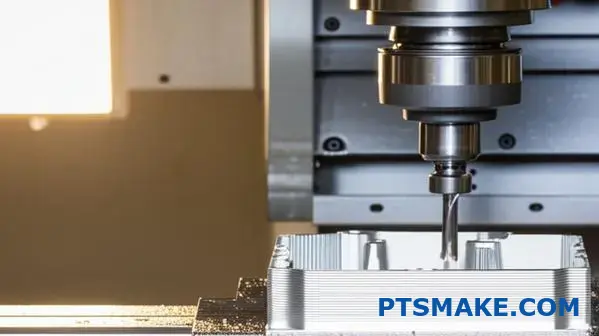
Pushing the Boundaries: Advanced Capabilities
Simply knowing the difference between milling and turning is just the beginning. The real value in a modern cnc machining manufacturer lies in its ability to leverage advanced technologies to turn a challenging design into a physical reality. This is where we move from basic production to high-precision manufacturing, enabling greater design freedom and superior product performance. In past explorations with clients, we’ve seen how pushing these boundaries can unlock innovations that were previously considered impossible to manufacture.
The Power of Multi-Axis and Hybrid Machining
We touched on 5-axis milling, but its impact is worth emphasizing. The ability to machine a complex part in a single setup—often called "done-in-one" manufacturing—is a game-changer. It not only eliminates the potential for human error from repeated setups but also ensures that all features are perfectly aligned with each other. This is crucial for applications in aerospace and medical devices where precision is non-negotiable.
Hybrid manufacturing takes this a step further by combining additive processes (like 3D printing metal) and subtractive processes (CNC machining) in a single machine. This allows for the creation of parts with internal cooling channels or complex lattice structures that are impossible to machine traditionally.
Achieving Tight Tolerances and Superior Surface Finishes
"Tolerance" refers to the acceptable deviation for a given dimension. A "tight" tolerance might be as small as ±0.005mm (or 0.0002 inches). Achieving this requires more than just an advanced machine; it demands a holistic approach.
- Machine Stability: The machine itself must be incredibly rigid and thermally stable to prevent minute deviations during operation.
- Tooling and Strategy: The choice of cutting tool, its coating, and the programmed toolpath all have a massive impact on the final accuracy and finish.
- Environment: Even ambient temperature fluctuations in the workshop can affect tolerances on sensitive parts. We operate in a climate-controlled environment to mitigate this.
Surface finish (measured in Ra) is equally important, especially for parts that seal, slide, or have specific aesthetic requirements. Different processes yield different finishes.
| Capability | Typical Specification | Impact on Design | Best Suited For |
|---|---|---|---|
| Standard Tolerance | ±0.1mm (±0.004") | Good for general purpose parts, enclosures | Consumer products, structural brackets |
| Tight Tolerance | ±0.01mm (±0.0004") | Allows for precise fits, alignments, and interfaces | Medical devices, aerospace components, engines |
| Standard Finish | 3.2 μm Ra | As-machined, visible tool marks | Non-critical surfaces, internal components |
| Fine Finish | 0.8 μm Ra | Smooth, reflective surface | Sealing surfaces, bearing fits, aesthetic parts |
Understanding these advanced capabilities allows you, the designer, to specify requirements with confidence, knowing they can be met. It opens the door to creating more compact, efficient, and reliable products.
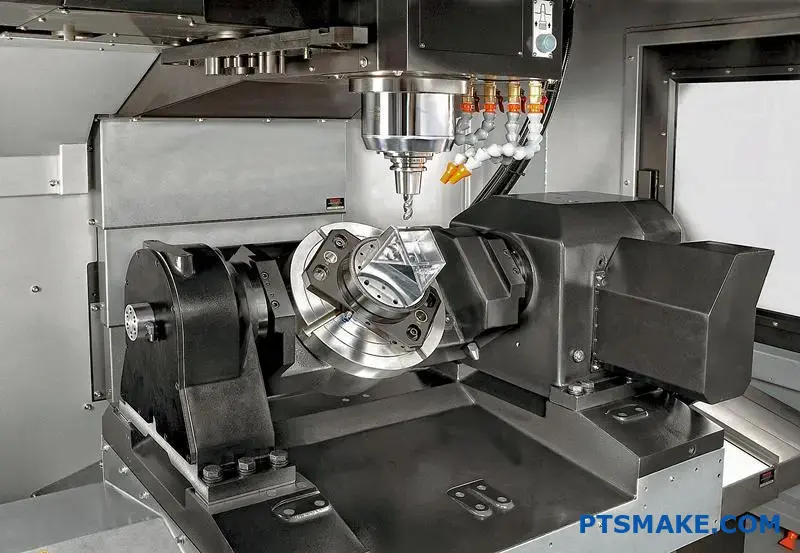
A deep understanding of CNC capabilities, from foundational milling and turning to advanced multi-axis machining, is crucial. This knowledge allows engineers to design for manufacturability, achieve tight tolerances and complex geometries, and ultimately create higher-quality, more innovative products.
How To Evaluating Quality Control Standards?
Have you ever approved a quote based on impressive quality claims, only to receive parts that just miss the mark? That small deviation can halt your entire production line.
To properly evaluate quality control, you must look beyond a certificate on the wall. A reliable cnc machining manufacturer demonstrates quality through verifiable ISO 9001 compliance, documented in-process inspections at critical stages, and the active use of Statistical Process Control (SPC) to prevent deviations before they occur.
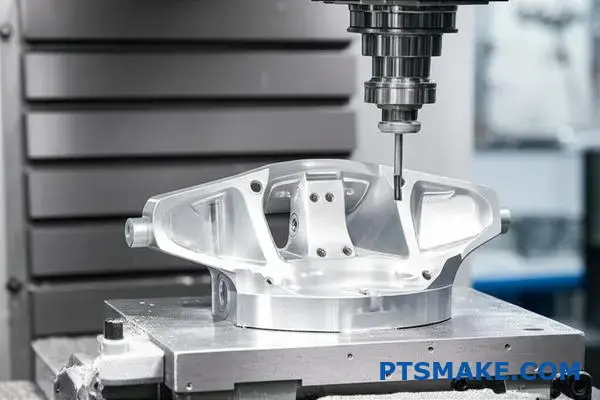
The Foundation of Trust: Certifications and Inspections
When you’re vetting a new manufacturing partner, certifications are the first thing you’ll likely check. They serve as a baseline for a company’s commitment to quality. However, not all certifications are created equal, and the paper itself is less important than the systems it represents.
ISO 9001: More Than Just a Badge
Almost every serious manufacturer has an ISO 9001 certificate. But what does it mean for your project? It signifies that the company has a Quality Management System (QMS). This isn’t just a document; it’s a framework for how they operate. It means they have defined procedures for everything from handling incoming raw materials to final part inspection and shipping. A key part of ISO 9001 is the requirement for continuous improvement. This forces a manufacturer to track non-conformances, find the root cause, and implement corrective actions to prevent them from happening again. When we work with clients in the aerospace or automotive sectors, we often need to comply with even stricter standards like AS9100 or IATF 16949, which build upon the ISO 9001 foundation with industry-specific requirements. The existence of these systems is a strong indicator of a supplier’s maturity and reliability. It shows they have a repeatable process for delivering quality. The science of Metrology2 underpins all these quality systems, ensuring that every measurement is accurate and reliable.
Inspection Points: Catching Errors Early
A quality plan is only as good as its execution. That’s where inspections come in. Relying solely on a final inspection before shipping is a huge risk. By then, if a problem is found, the entire batch could be scrap, leading to massive delays and costs. This is why in-process inspections are non-negotiable.
| Inspection Type | Key Purpose | When It Occurs |
|---|---|---|
| First Article Inspection (FAI) | To validate that the manufacturing process is capable of producing a part that meets all specifications. | Before starting the main production run. |
| In-Process Inspection (IPI) | To monitor the process and catch any deviations or tool wear before they result in defective parts. | At scheduled intervals or critical steps during production. |
| Final Quality Control (FQC) | To perform a final verification of the completed parts against the engineering drawings and requirements. | After the production run is complete, before packaging. |
In past projects at PTSMAKE, we’ve found that implementing a key in-process check after a long CNC milling cycle for a complex medical device component reduced the final rejection rate by over 70%. It caught subtle tool wear that wasn’t apparent until several features were machined. This early detection is what separates a reactive supplier from a proactive partner.
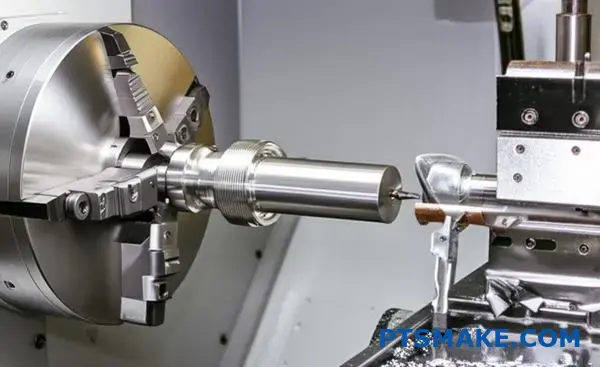
Data-Driven Quality: Moving from Detection to Prevention
The most advanced manufacturers don’t just inspect for quality; they build it into the process using data. This proactive approach is what truly minimizes errors and ensures consistency from the first part to the ten-thousandth.
Statistical Process Control (SPC)
Statistical Process Control (SPC) is a powerful data-driven methodology. Instead of just checking if a part is "good" or "bad" (within or out of tolerance), SPC monitors the performance of the process itself in real time. We use control charts to plot measurements from production samples. These charts have upper and lower control limits calculated from the process’s own historical data. As long as the data points fall randomly within these limits, the process is considered "in control" and stable. If points start trending towards a limit or show a non-random pattern, it signals that something is changing—perhaps a tool is wearing down or a material characteristic has shifted. This allows us to intervene and correct the issue before any out-of-spec parts are ever produced. It’s the ultimate form of preventative quality assurance and a hallmark of a top-tier cnc machining manufacturer.
The Right Tools for the Job
Effective quality control depends on having the right measurement equipment and knowing how to use it. A supplier’s investment in its quality lab speaks volumes about its capabilities.
| Measurement Tool | Best Application | Typical Precision Achievable |
|---|---|---|
| Coordinate Measuring Machine (CMM) | Complex 3D parts, GD&T verification | Down to 0.001 mm |
| Vision Measurement System | Small, intricate 2D features, batch checks | Down to 0.003 mm |
| Digital Micrometer | High-precision diameters and thicknesses | Down to 0.001 mm |
| Calibrated Pin & Thread Gauges | Go/No-Go checks for hole diameters and threads | Pass/Fail against a set standard |
Crucially, all these tools must be part of a rigorous calibration schedule. An uncalibrated micrometer can provide a false sense of security and is arguably more dangerous than no measurement at all. At PTSMAKE, our calibration records are a core part of our QMS and are regularly audited. We ensure that every measurement we provide our clients is traceable back to a known standard, providing complete confidence in the results. This disciplined approach is fundamental to delivering parts that meet the most demanding specifications.
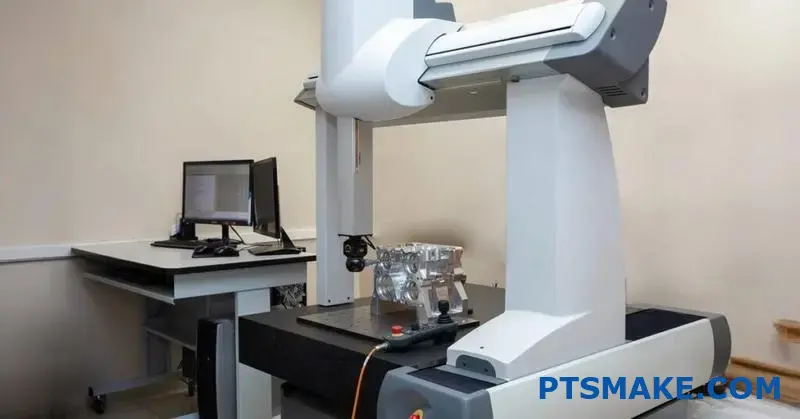
Evaluating a manufacturer’s quality standards goes beyond their ISO certificate. It involves confirming their use of in-process inspections to catch errors early and data-driven tools like SPC to prevent them entirely. A commitment to calibrated, high-precision measurement equipment is the final piece of the puzzle.
Lead Times And On-Time Delivery.
Have you ever had a project timeline completely shattered by a single delayed component? The frustration of watching a launch date slip because a supplier couldn’t deliver on time is a risk no engineer wants to take.
A reliable CNC machining manufacturer ensures on-time delivery by mastering production scheduling, accelerating prototyping, and efficiently managing large-volume orders. This is achieved through advanced planning systems, dedicated rapid response teams, and transparent communication, turning promises into dependable timelines for both custom and production parts.

When evaluating a manufacturing partner, their approach to scheduling is one of the most critical indicators of their reliability. It’s far more than just plugging dates into a calendar. A truly dependable schedule is a dynamic system that balances machine capacity, material availability, labor, and quality control checkpoints. At PTSMAKE, we view the production schedule as the central nervous system of our operations, a live map that guides every part from raw material to finished product.
Decoding the Complexity of Production Schedules
A common misconception is that lead time is simply the sum of machining hours. In reality, the process begins much earlier. It involves a detailed Design for Manufacturability (DFM) review to catch potential issues, followed by CAM programming, tool setup, and material procurement. Each of these steps has its own timeline that must be perfectly synchronized. We utilize integrated ERP systems to create a cohesive plan, ensuring that raw materials arrive just in time for their scheduled machine slot and that the necessary tooling is prepared in advance. This prevents the common bottleneck where a machine sits idle, waiting for materials or instructions. This method of production leveling, sometimes known as Heijunka3, is key to creating a smooth and predictable workflow, minimizing idle time and maximizing efficiency across all projects, not just the one in question.
Prototyping Speed: The First Test of Reliability
A manufacturer’s ability to produce prototypes quickly and accurately is often a strong indicator of their overall efficiency. Fast, high-quality prototypes allow you to validate your design and move to production with confidence. A slow prototyping process, however, can cause cascading delays that impact your entire development cycle. We’ve structured our process to separate rapid prototyping from our main production runs. This involves dedicated equipment and a specialized team focused solely on turning around prototypes quickly without compromising on precision. This streamlined approach significantly shortens the initial phase of any project.
Here’s a comparison of a standard versus an optimized workflow:
| Feature | Standard Prototyping | Optimized Prototyping (Our Approach) |
|---|---|---|
| Initial Review | 24-48 hours | Under 12 hours, with DFM feedback |
| Programming | Sequential process | Parallel programming during review |
| Machine Allocation | General production queue | Dedicated rapid prototyping cell |
| Typical Turnaround | 7-14 business days | 3-5 business days |
This optimized flow demonstrates how a proactive cnc machining manufacturer can provide a significant advantage right from the start.
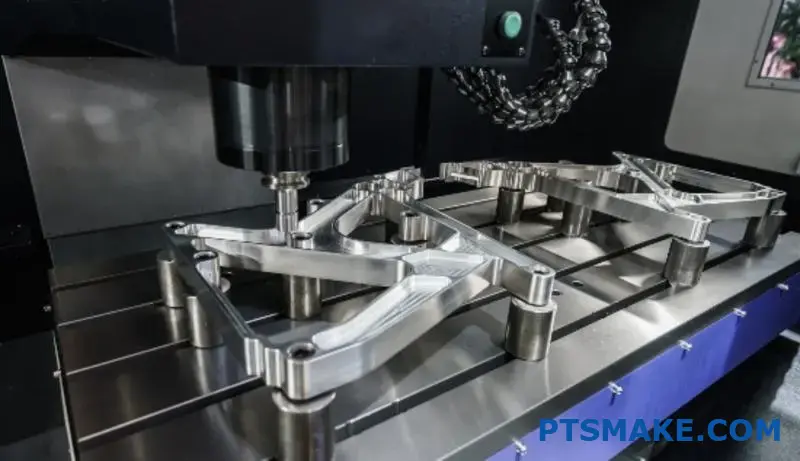
Beyond fast prototypes, the true test of a partner is their ability to scale up to large-volume orders while maintaining deadlines and quality. The transition from making ten parts to ten thousand parts introduces a completely different set of logistical challenges. A manufacturer that excels at this transition proves its capability and becomes a long-term strategic asset. It’s not just about having more machines; it’s about having the processes, supply chain, and quality systems to support that scale.
Strategies for Scaling and Ensuring Timeliness
Successfully managing large orders requires a proactive, not reactive, approach. This means planning for capacity, managing the supply chain rigorously, and implementing systems that anticipate problems before they occur. We’ve learned that transparency and robust internal processes are the keys to preventing the kinds of surprises that lead to delays. A reliable partner will never leave you guessing about the status of your order.
From One to One Thousand: The Scaling Process
When a project moves from prototype to production, we create a detailed production plan. This involves sourcing raw materials in bulk to secure better pricing and ensure availability, dedicating specific machines or production cells to the project for consistency, and developing custom fixtures or jigs to speed up setup times for recurring orders. Furthermore, our preventive maintenance schedule ensures that machinery is always in peak condition, minimizing the risk of unexpected downtime that could halt a large production run. It’s this type of forward-thinking that separates an average supplier from a true manufacturing partner.
Mitigating Common Delivery Risks
Even the best-laid plans can face challenges. The difference lies in how a manufacturer prepares for and responds to them. Over the years, we’ve developed clear strategies to mitigate the most common causes of delays.
| Common Delay Cause | Proactive Mitigation Strategy |
|---|---|
| Raw Material Shortage | Establishing a pre-vetted network of multiple material suppliers. |
| Unexpected Machine Downtime | Implementing a strict, data-driven preventive maintenance program. |
| Mid-Production Quality Issues | Using in-process quality control (IPQC) to catch deviations early. |
| Communication Breakdowns | Assigning a dedicated project manager as a single point of contact. |
By addressing these potential issues head-on, we build reliability into our process, ensuring that we can confidently commit to and meet the delivery dates our clients depend on.
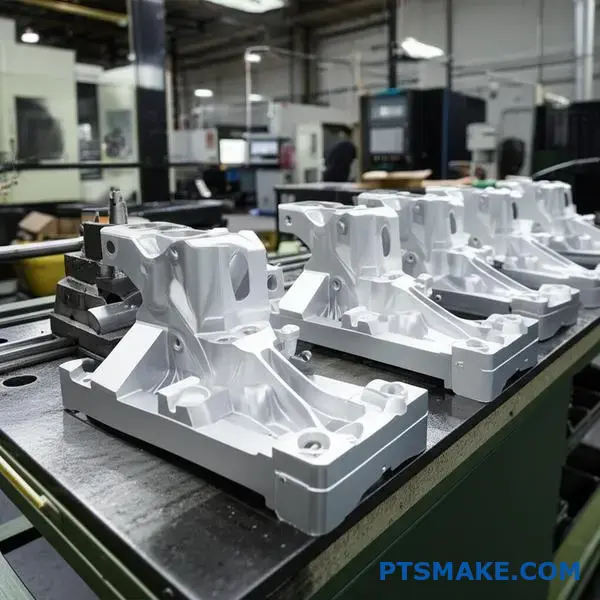
On-time delivery isn’t an accident; it’s the result of rigorous planning and proactive management. A dependable CNC machining manufacturer masters production scheduling, from rapid prototyping to high-volume runs, by using advanced systems, clear communication, and robust risk mitigation to ensure your parts arrive as promised.
Supplier Communication And Responsiveness
Ever felt your project’s urgency was lost in a void of slow email replies and vague updates? Are you tired of chasing suppliers for basic information that should be readily available?
Effective supplier communication is built on clarity, fast quoting, and proactive updates. A responsive CNC machining manufacturer addresses design changes, technical questions, and urgent requests promptly, which builds trust and keeps your project on schedule and within budget.
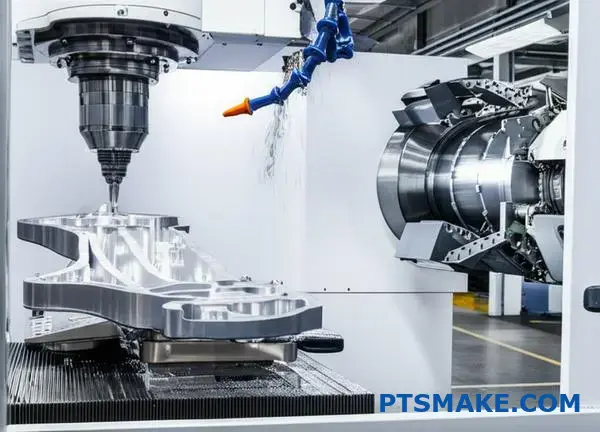
The Foundation of Trust: Clear and Proactive Communication
In manufacturing, communication isn’t just about exchanging information; it’s the bedrock of a successful partnership. When a supplier communicates clearly and proactively, it signals respect for your time, your budget, and your project’s goals. This isn’t just a "nice to have"—it’s a critical component that separates an average supplier from a true manufacturing partner. Without it, even the most technologically advanced facility can cause costly delays and frustration.
From Ambiguity to Clarity
Clear communication starts with listening. A great supplier doesn’t just read a purchase order; they seek to understand the intent behind the design. They ask clarifying questions about critical features, tolerances, and the end-use application. This ensures that both parties share the exact same vision for the final part, preventing misunderstandings that could lead to scrap or rework. This process of achieving a shared understanding is crucial for project success. In our projects at PTSMAKE, we establish a single point of contact for each project to streamline this process and ensure nothing is lost in translation. This alignment, or isomorphism4, between your design and our manufacturing plan is non-negotiable.
The Power of a Fast Quote
A quote is often the first real interaction you have with a potential cnc machining manufacturer. A slow, incomplete, or inaccurate quote is a major red flag. It suggests disorganized internal processes or a lack of interest in your project. Conversely, a fast, detailed, and accurate quote demonstrates efficiency and respect. It shows the supplier has the expertise to quickly analyze your design, assess manufacturing requirements, and provide a clear cost breakdown. This initial responsiveness sets the tone for the entire relationship and gives you the confidence to move forward.
Proactive Updates vs. Reactive Replies
The best suppliers don’t wait for you to ask for an update. They provide proactive information at key project milestones. This builds immense trust and eliminates the anxiety of the unknown.
| Communication Style | Reactive Supplier | Proactive Supplier (Our Approach) |
|---|---|---|
| Project Start | Confirms receipt of PO. | Confirms PO, provides estimated timeline with key milestones. |
| During Production | Silent unless a problem occurs. | Sends updates at milestones (e.g., material received, first article inspection complete). |
| Potential Issue | Informs you after the issue causes a delay. | Alerts you to a potential issue and proposes a solution before it impacts the schedule. |
| Shipping | Sends tracking number upon request. | Sends tracking number and confirms shipment automatically. |
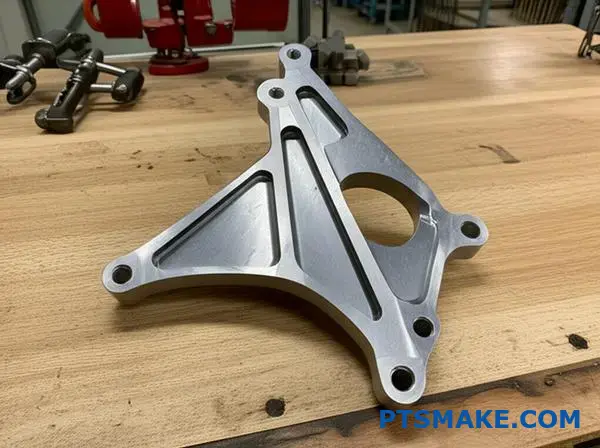
Keeping Projects on Track: Responsiveness in Action
Trust is built through proactive communication, but it’s tested when challenges arise. A project rarely goes exactly as planned. Design files are revised, technical questions emerge, and unexpected urgencies occur. How a supplier responds in these critical moments defines their value as a partner. A responsive supplier doesn’t just react; they have systems in place to manage these events efficiently, preventing small issues from snowballing into major delays.
Agile Handling of Design Changes
Design revisions are a reality in product development. A responsive supplier understands this and has a clear process for managing them. When you submit a revised CAD file, you shouldn’t have to wait days for confirmation. The supplier should quickly acknowledge the change, assess its impact on cost and timeline, and provide clear feedback for your approval. In the past with clients, we’ve seen how a slow response to a simple design change can delay production by a week, which in turn affects the entire product launch schedule. To prevent this, we use a formal Engineering Change Notice (ECN) process that ensures every revision is documented, reviewed by our engineers, and confirmed with the client before implementation.
Providing Expert Technical Answers
When you have a technical question—whether it’s about material selection, surface finish options, or a Design for Manufacturability (DFM) suggestion—you need to speak with an expert. A responsive supplier makes its engineers accessible. You shouldn’t be stuck in a loop with a salesperson who has to relay questions back and forth. Direct access to engineering expertise provides immediate, accurate answers that help you make informed decisions quickly. This collaborative approach ensures the final part is not only manufactured correctly but is also optimized for performance and cost.
Managing Urgent Requests
Sometimes, you need a part yesterday. While not always possible, a responsive supplier will have a clear protocol for evaluating urgent requests. They won’t just say "no." They will assess their current production schedule, explore options for expediting, and give you a realistic and honest answer about what is achievable.
| Request Stage | Unresponsive Supplier | Responsive Supplier |
|---|---|---|
| Initial Contact | Takes 24-48 hours to reply. | Responds within hours to acknowledge the request. |
| Feasibility Check | Vague answer: "We’ll see what we can do." | Provides a concrete answer on feasibility and potential timeline within a business day. |
| Costing | Provides an inflated "rush fee" without justification. | Provides a clear quote detailing any expedite costs (e.g., overtime, special shipping). |
| Commitment | Makes a promise they can’t keep, leading to a delay. | Commits to a realistic timeline and provides frequent updates. |
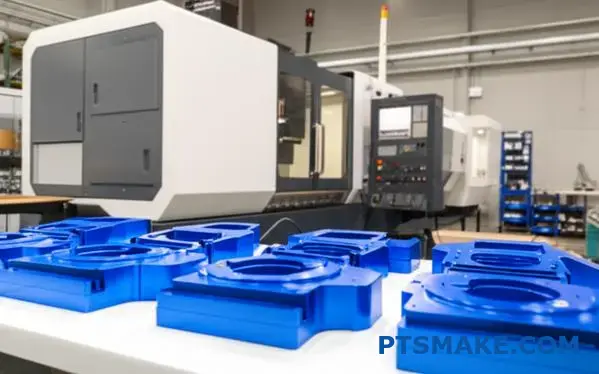
Clear, proactive communication builds foundational trust. A truly responsive supplier demonstrates this by efficiently handling design changes, technical questions, and urgent requests, keeping your project moving forward without costly delays and strengthening the partnership with every interaction.
Material Selection And Traceability: What To Expect From Your CNC Machining Manufacturer?
Have you ever approved a prototype that looked perfect, only to see it fail unexpectedly under real-world stress? The issue often lies hidden in the material’s unverified history.
A top-tier CNC machining manufacturer verifies material quality through rigorous incoming inspection and testing, maintains an unbroken chain of traceability from the raw material mill to the final part, and provides comprehensive documentation like Material Test Reports (MTRs) and Certificates of Conformity (CoC) to guarantee compliance.
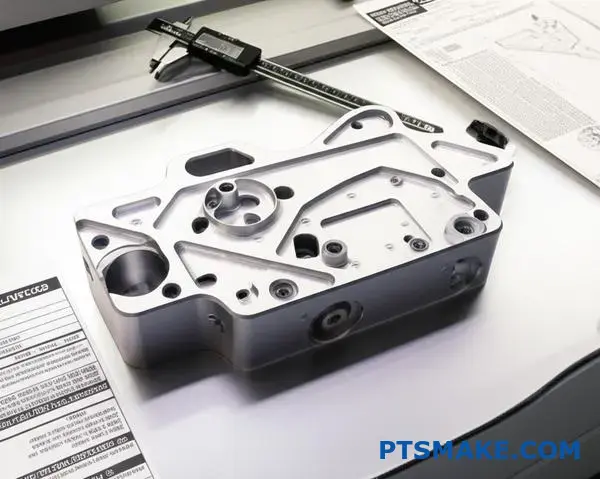
The foundation of any high-quality machined part is the raw material itself. A claim about using a specific grade of aluminum or stainless steel is meaningless without a robust verification process. At PTSMAKE, we treat material verification not as a final checkbox, but as the critical first step in the manufacturing process. It’s about building trust from the ground up.
Incoming Material Inspection: The First Line of Defense
Before any material is accepted into our inventory, it undergoes a strict incoming inspection. This isn’t just a quick glance. Our quality team meticulously checks the delivery against the purchase order and the supplier’s documentation. We verify dimensions, look for any surface defects, and ensure the material is properly labeled with its heat number or lot number. This initial step is crucial because it catches obvious discrepancies before they can enter the production workflow, saving significant time and resources. Any material that fails this initial gatekeeping is immediately quarantined and returned to the supplier.
Advanced Testing for Unquestionable Quality
Visual checks are important, but they don’t tell the whole story. To truly verify a material’s integrity, we rely on advanced testing methods. The specific tests depend on the material and the customer’s requirements, especially for parts used in sensitive applications.
Verifying Chemical Composition
For metallic alloys, confirming the exact chemical composition is non-negotiable. We use Positive Material Identification (PMI) analyzers, which use a technology called spectrometry5, to confirm that the elemental makeup of the material matches the specified grade. For example, ensuring 316 stainless steel has the correct percentage of molybdenum is critical for its corrosion resistance. A small deviation can lead to catastrophic failure in a marine or chemical processing environment.
Confirming Mechanical Properties
A material’s datasheet lists its mechanical properties, but we often perform our own tests to verify these claims. This includes hardness testing (using Rockwell or Brinell methods) and tensile testing. Tensile tests are destructive, as we pull a sample piece until it breaks, but they provide invaluable data on its ultimate tensile strength, yield strength, and elongation. This data confirms the material will perform as expected under mechanical stress.
| Testing Method | Primary Purpose | Common Application Scenarios |
|---|---|---|
| Positive Material ID (PMI) | To verify the chemical composition of an alloy | Aerospace components, medical implants, high-pressure-vessels |
| Hardness Testing (Rockwell) | To measure resistance to localized plastic deformation | Heat-treated parts, wear-resistant surfaces, quality control checks |
| Tensile Testing (Destructive) | To determine strength and ductility under tension | Critical structural parts, load-bearing components, new material validation |
| Ultrasonic Testing (UT) | To detect internal flaws like cracks or voids | Safety-critical components, thick raw material billets, weld inspections |

Verification is only half the battle; maintaining that verification throughout the entire manufacturing process is what defines a truly reliable partner. This is where traceability comes in. Traceability is the ability to follow the journey of a specific batch of material from its source, through every machining operation, to the final packaged part. For industries like aerospace, medical, and automotive, this isn’t a "nice to have," it’s a mandatory requirement.
The Unbroken Chain: Lot and Batch Traceability
From the moment a raw material bar or sheet is accepted, it’s assigned a unique internal lot number. This number links it directly to the supplier’s heat number and the associated Material Test Report. This internal ID is then logged and follows the material through every step: cutting, CNC milling, turning, secondary operations like heat treating or anodizing, and final inspection. Each work order specifies the exact material lot to be used. This creates an unbroken chain of documentation. In the unlikely event of a material defect being discovered later, we can instantly identify every single part made from that specific batch, even if they were part of different orders. This capability is critical for targeted recalls, minimizing risk and liability for our clients.
Documentation: Your Proof of Compliance
As an engineer or procurement manager, you shouldn’t have to take a manufacturer’s word for it. The proof is in the documentation. A professional CNC machining manufacturer will proactively provide a clear and comprehensive paper trail.
Material Test Reports (MTRs)
Also known as a mill test report or certified mill test report (CMTR), this document comes directly from the material manufacturer. It is the material’s "birth certificate." It details the results of testing performed on the specific heat number of the material, including its precise chemical analysis and mechanical properties. We always ensure the MTR we receive matches the material we are using for your project.
Certificates of Conformity (CoC)
While an MTR certifies the raw material, a Certificate of Conformity (CoC) is a document issued by us, the part manufacturer. The CoC is our formal declaration that the finished parts we’ve produced meet all of your specifications—from the material used to the dimensional tolerances, finish, and any other requirements outlined in your drawings and purchase order. It’s the final piece of assurance that what you receive is exactly what you ordered.
| Document Type | Provided By | What It Certifies |
|---|---|---|
| Material Test Report (MTR) | The material mill | The chemical and physical properties of the raw material batch (heat number). |
| Certificate of Conformity (CoC) | The part manufacturer (PTSMAKE) | The finished part conforms to all drawing specifications and requirements. |
| Final Inspection Report | The part manufacturer (PTSMAKE) | The measured dimensional data for specific features on the finished parts. |
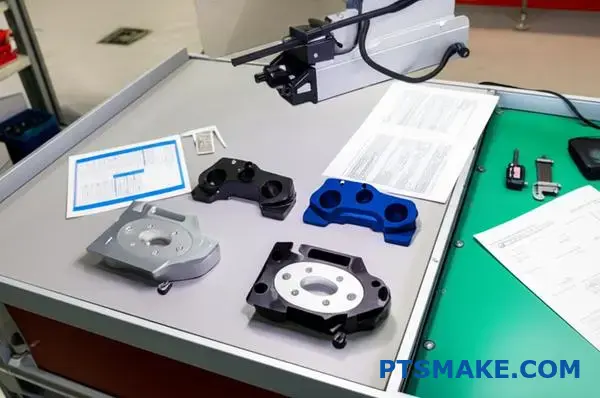
A part’s reliability starts with its material. A trustworthy CNC machining manufacturer ensures quality through rigorous verification testing and maintains a complete, unbroken traceability record. This process, supported by clear documentation like MTRs and CoCs, guarantees that final components meet the stringent demands of any industry.
Cost-Effectiveness And Value Engineering
Struggling to understand why CNC machining quotes vary so much? Are you concerned that the lowest price might come with hidden costs like delays or poor quality, ultimately derailing your project budget?
True cost-effectiveness from a premier CNC machining manufacturer is not about sacrificing quality for a lower price. It’s achieved through a strategic blend of efficient processes, intelligent automation, and collaborative Design for Manufacturability (DFM) to maximize value from prototype to production.
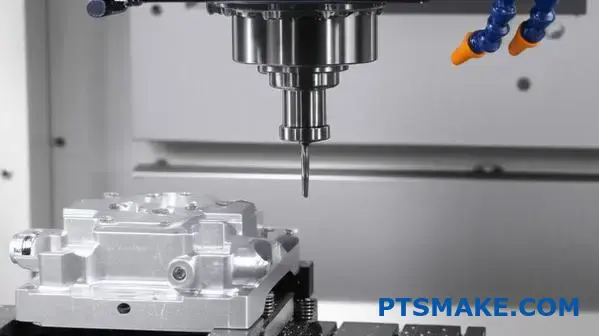
A common misconception is that cost-effectiveness simply means finding the cheapest quote. However, the true cost of a machined part extends far beyond the initial price. It includes the potential costs of delays, rejects, and failures in the field. A strategic CNC machining partner focuses on delivering long-term value by optimizing every step of the manufacturing process. This begins long before the machine starts cutting.
The Power of Design for Manufacturability (DFM)
One of the most significant areas for cost optimization is DFM. This is a collaborative process where we work with your design team to make minor adjustments that can lead to major savings. For instance, in a past project at PTSMAKE, a client’s design included several deep pockets with very sharp internal corners. While achievable, it required specialized tooling and significantly longer machine times. By suggesting a slightly larger corner radius, we maintained the part’s full functionality while reducing the machining time by over 30%. This simple change, made before production began, saved the client a substantial amount on their large-volume order.
Efficient Processes and Toolpath Optimization
Inside the workshop, efficiency is key. Advanced CAM software allows us to create highly optimized toolpaths that minimize machine movement and reduce cycle times. Every second saved on a single part translates into significant cost reductions over a production run. We also focus on minimizing setup times through modular fixtures and standardized procedures. This agility allows us to switch between jobs quickly, reducing overhead and making us more competitive for both small and large batches. This operational excellence is a hallmark of a top-tier cnc machining manufacturer. A crucial metric we monitor is the Takt Time6, which helps us align our production rate directly with customer demand, preventing overproduction and waste.
Material Selection and Utilization
Material costs can account for a large portion of a part’s final price. Our role involves more than just ordering the specified stock. We analyze the part geometry to select the most appropriate raw material size, minimizing waste. For a recent aerospace component, we found that by slightly reorienting the part on the stock material, we could reduce scrap by 15%, passing those savings directly to the customer.
| Optimization Tactic | Standard Approach | Optimized Approach | Potential Cost Impact |
|---|---|---|---|
| Internal Corners | Sharp 90° corners | Radiused corners (e.g., 3mm) | 20-40% reduction in machining time |
| Material Usage | Default stock size | Optimized nesting/stock size | 5-15% reduction in material cost |
| Wall Thickness | Very thin walls (<0.5mm) | Uniform, thicker walls (>1mm) | Reduces vibration, improves finish |
| Tolerances | Overly tight everywhere | Critical tolerances only | Reduces inspection time and rejects |

Balancing the "iron triangle" of price, quality, and scalability is a constant challenge, especially when moving from a single prototype to a full production run. What works for one stage may not be optimal for the other. The key is to work with a manufacturing partner who understands how to navigate these trade-offs and can provide a clear path for growth.
Prototyping: Speed and Feedback Over Unit Cost
During the prototyping phase, the primary goals are speed and design validation. The cost-per-part will naturally be higher because setup costs are amortized over just one or a few units. At this stage, value isn’t found in the lowest price. It’s found in quick turnaround times that allow your engineering team to iterate faster. It’s also found in the quality of feedback. At PTSMAKE, when we produce a prototype, we don’t just ship a part; we provide a DFM report that highlights potential cost-saving opportunities for future production runs. This early-stage investment in collaboration pays dividends when it’s time to scale.
Production: Shifting Focus to Scalability and Consistency
As you move into low-volume or mass production, the economic model shifts. The focus moves towards reducing the cost-per-part while maintaining absolute consistency. This is where the initial DFM work becomes critical. Automation also plays a larger role. For larger runs, we might implement robotic arms for loading and unloading parts or use in-process probes to automate quality checks. These investments reduce labor costs and human error, ensuring every part, from the first to the ten-thousandth, meets the exact same specifications.
The True Meaning of Scalability
A truly scalable cnc machining manufacturer doesn’t just have more machines; they have scalable processes. This means having robust quality systems that can handle increased volume, established supply chains for materials, and the process controls needed to ensure consistency. When vetting a partner, ask how they would handle a 10x increase in your order volume. Their answer will reveal their true scalability.
| Project Stage | Primary Goal | Key Cost Driver | Ideal Partner Focus |
|---|---|---|---|
| Prototype | Speed & Design Validation | Setup Time & Engineering Feedback | Fast turnaround, DFM expertise |
| Low-Volume | Process Validation & Market Fit | Machining Time & Material | Flexible setups, process control |
| High-Volume | Cost-per-Part & Consistency | Automation & Material Sourcing | Optimized cycle times, supply chain |
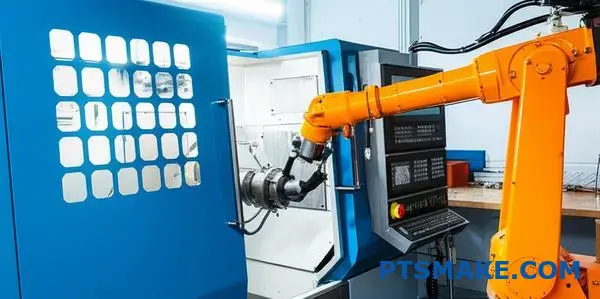
Effective cost management in CNC machining goes beyond the price tag. It involves a partnership focused on value engineering through smart DFM, efficient processes, and a clear strategy for balancing price, quality, and scalability as your project evolves from a single prototype to full production.
Managing Multi-Supplier Complexity
Tired of juggling multiple vendor spreadsheets, chasing down updates from different contacts, and dealing with inconsistent quality? Is this complexity creating delays and blowing up your budget?
The solution is to consolidate your supply chain with a single, integrated partner. Working with one expert CNC machining manufacturer streamlines communication, unifies quality assurance, and simplifies logistics, saving you significant time, money, and stress.
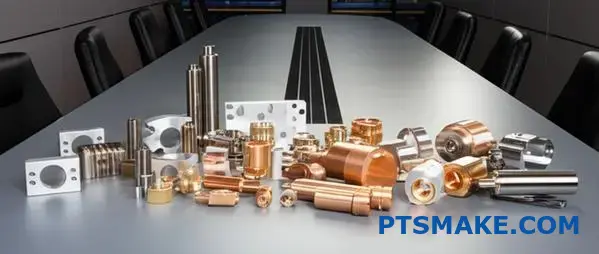
The Hidden Burdens of a Fractured Supply Chain
Managing multiple suppliers might seem like a good way to diversify risk or find the lowest price for each component, but it often introduces hidden costs and inefficiencies that can cripple a project. The complexity goes far beyond just managing a few extra invoices. In my experience, these challenges snowball quickly, creating significant friction in the product development lifecycle.
Communication Breakdowns
When you work with separate suppliers for CNC machining, injection molding, and finishing, you create multiple, disconnected lines of communication. Each supplier has a different point of contact, a different reporting style, and potentially a different time zone. A simple design update requires you to coordinate with every single vendor, ensuring they all understand the change and its impact on their process. This creates opportunities for misinterpretation, leading to errors, rework, and delays. What should be a straightforward update becomes a complex logistical task, draining valuable engineering time.
Inconsistent Quality Control
Each manufacturing partner has its own quality assurance (QA) standards and processes. One supplier might have incredibly tight tolerances for their machined parts, while another’s molded components have a wider acceptable variance. When these parts need to integrate seamlessly, even minor differences can lead to major assembly headaches. I’ve seen projects delayed for weeks because a CNC machined part from one vendor didn’t fit perfectly with an injection-molded housing from another. Tracing the root cause becomes a blame game, with you caught in the middle. This problem of Supply Chain Fragmentation7 is a common source of project failure.
Logistical Nightmares
Coordinating logistics from multiple locations is a full-time job. You have to manage staggered delivery schedules, track separate shipments, and handle distinct customs paperwork for each import. A delay from one supplier can create a domino effect, halting your entire production line as you wait for a critical component. This not only impacts your timeline but also increases shipping costs and inventory holding costs as parts arrive at different times and must be stored until all components are ready for assembly.
Here’s a simple breakdown of the added complexity:
| Aspect | Multi-Supplier Scenario | Single-Source Partner |
|---|---|---|
| Communication | Multiple contacts, time zones, and reporting styles. | Single point of contact for the entire project. |
| Quality Control | Disparate standards, risk of integration issues. | Unified QA system, ensuring all parts fit and function. |
| Logistics | Multiple shipments, customs forms, and timelines. | One consolidated shipment, simplified paperwork. |
| Accountability | Diffused responsibility, potential for blame games. | Full accountability for the end-to-end result. |
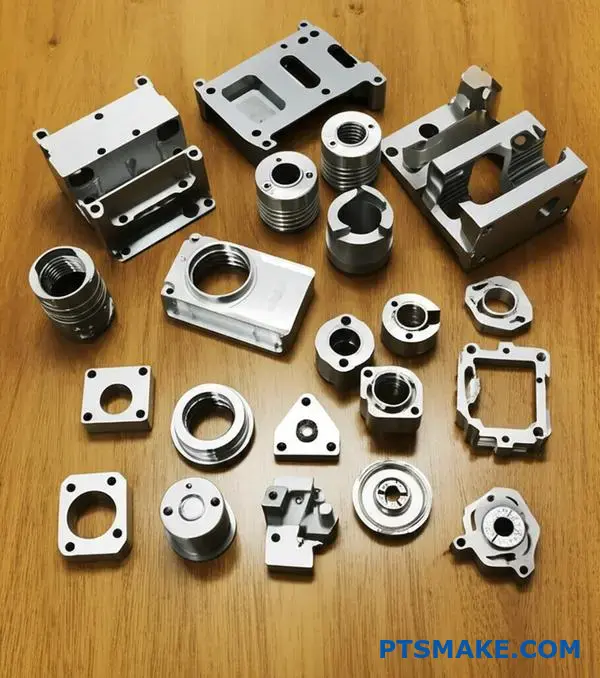
The Strategic Advantage of an Integrated Manufacturing Partner
Shifting from a multi-vendor approach to a single-source partner isn’t just about convenience; it’s a strategic move that provides a powerful competitive advantage. An integrated cnc machining manufacturer that also handles services like injection molding acts as a true extension of your team, aligning their processes with your project goals from start to finish. This synergy transforms the procurement process from a series of transactions into a collaborative partnership.
A Single Source of Truth
The most immediate benefit is having a single point of contact. At PTSMAKE, our project managers oversee every stage of production, from initial DFM analysis for a CNC milled prototype to the final quality check on a large batch of molded parts. When you have a question or need to make a change, you have one person to call. This person understands the entire scope of your project, ensuring that any adjustments are communicated seamlessly across all internal departments. This eliminates the risk of miscommunication and ensures everyone is working from the same playbook.
Unified and Uncompromising Quality
When one partner is responsible for all components, they are fully accountable for the final fit and function. There’s no finger-pointing. An integrated partner ensures that the surface finish of a machined aluminum part is perfect for the overmolding process they will also handle. They guarantee that a CNC turned pin will fit precisely into an injection-molded gear because they control the tolerances of both. Our quality system at PTSMAKE is designed to manage these interdependencies, conducting fit tests and functional checks before anything ships. This unified QA process de-risks your assembly line and ensures the final product meets your exact specifications.
Accelerated Timelines and Simplified Logistics
An integrated partner can optimize the entire production workflow. For instance, we can begin CNC machining critical metal inserts while the injection mold is still being fabricated. This parallel processing, managed under one roof, can significantly shorten overall lead times compared to waiting for one supplier to finish before shipping parts to the next. When production is complete, everything is consolidated into a single shipment. This means one invoice, one set of customs documents, and one delivery to track. This simplification not only reduces administrative workload but also lowers shipping costs and gets your product to market faster.
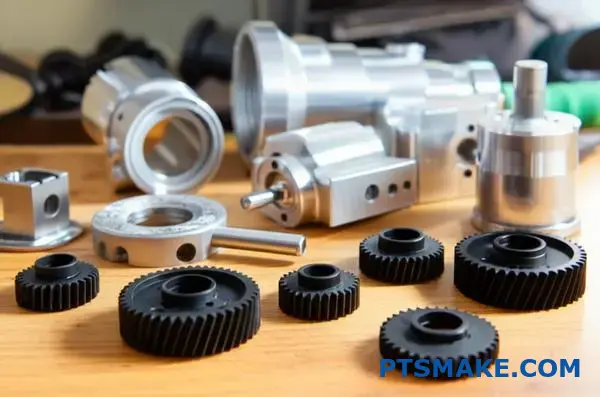
Juggling multiple vendors introduces hidden costs through communication breakdowns, quality inconsistencies, and logistical complexity. Partnering with a single, integrated cnc machining manufacturer streamlines operations by providing a single point of contact, unified quality control, and simplified logistics, ensuring a more efficient and reliable production process.
Building Long-Term Partnerships
Tired of the endless cycle of quoting and vetting new suppliers for every single project? Worried that the next new vendor might not grasp your quality standards, leading to costly delays?
A strong, long-term partnership with a CNC machining manufacturer is a strategic asset. It builds a foundation of trust, ensuring consistent quality, unwavering reliability, and collaborative innovation that drives sustainable success far beyond a single purchase order.
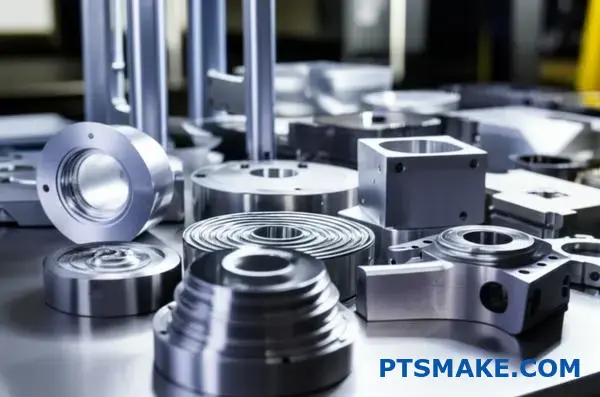
The Foundation: Moving from Transaction to Trust
Choosing a CNC machining manufacturer isn’t just about finding the lowest price; it’s about finding a partner who can consistently meet your specifications. In the beginning, every relationship is transactional. You send a purchase order, they deliver parts. But a true partnership begins to form when that transaction evolves into a deeper understanding.
Consistency is King
With a new supplier, you have to re-explain your quality standards, your finishing requirements, and your critical tolerances every time. A long-term partner, however, learns your preferences. They know which surfaces are cosmetic, which dimensions are critical-to-function, and what your inspection reports need to look like. This shared knowledge eliminates friction and dramatically reduces the chance of misinterpretation. In our work at PTSMAKE, we’ve seen that this Mutual Process Alignment8 is the key to reducing non-conformance and accelerating project timelines. The manufacturer becomes an extension of your own quality team, anticipating your needs rather than just reacting to your drawings.
The True Meaning of Reliability
Reliability is more than just on-time delivery. It’s about communication, transparency, and problem-solving. A reliable partner tells you about a potential production issue before it impacts your deadline, not after. They work with you to find a solution, whether it’s adjusting a tolerance or suggesting a material alternative. This proactive communication builds a level of trust that a one-off transactional relationship can never achieve. Over time, you stop worrying about whether the parts will show up; you know they will, and you know they’ll be right.
This table illustrates the time investment difference when working with a new supplier versus an established partner on a typical project:
| Task | Time with New Supplier | Time with Established Partner |
|---|---|---|
| Onboarding & Vetting | 8-16 hours | 0 hours |
| Technical Clarification | 2-5 hours | <1 hour |
| Quality Standard Review | 3-6 hours | 0 hours |
| Project Management | High | Low |
As you can see, the hidden costs of constantly switching suppliers add up quickly, not just in money, but in your valuable engineering time.
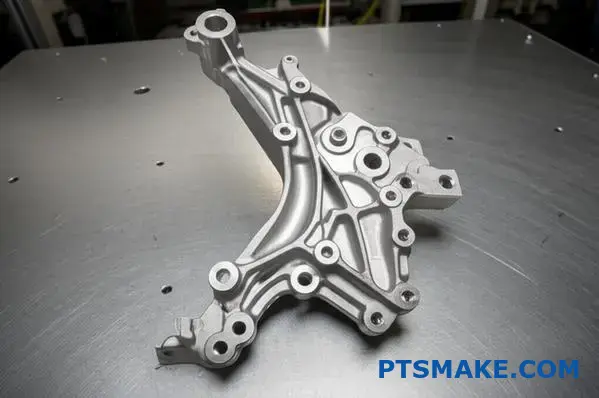
The Payoff: Collaboration and Strategic Advantage
Once a foundation of trust and reliability is established, the real benefits of a long-term partnership begin to emerge. Your CNC machining manufacturer transitions from a simple supplier to a strategic collaborator who actively contributes to your success.
Unlocking Collaborative Innovation
One of the most powerful advantages is access to proactive Design for Manufacturability (DFM) feedback. A partner who understands your product’s end-use can offer insights that go far beyond the print. In a past project with a client in the automotive sector, our early DFM input on a complex aluminum housing helped them consolidate two components into one. This change, suggested by our engineers who understood their long-term goals, not only reduced part cost by 30% but also improved the component’s structural integrity. A new supplier, focused only on the current order, would have simply machined the two separate parts as designed. This collaborative innovation is only possible when both sides are invested in the long-term outcome.
Gaining a Competitive Edge
A strategic partnership provides a significant competitive advantage, especially in a volatile market. When material shortages occur or machine capacity becomes tight, who do you think a manufacturer will prioritize? The one-off customer looking for the cheapest price, or the loyal partner they’ve worked with for years? This priority access ensures your production lines keep running when your competitors might be stalled. It provides a level of supply chain resilience that is impossible to achieve through purely transactional relationships.
Here’s a comparison of what to expect from a transactional supplier versus a strategic partner:
| Attribute | Transactional Supplier | Strategic Partner |
|---|---|---|
| Communication | Reactive | Proactive & Collaborative |
| DFM Input | None, or upon request | Offered early and often |
| Problem Solving | Reports problems | Proposes solutions |
| Priority | Low | High |
| Focus | Price per part | Total cost & long-term value |
Ultimately, investing in a partnership with a CNC machining manufacturer means you’re not just buying parts; you are securing capacity, expertise, and a dedicated ally committed to helping you innovate and grow.
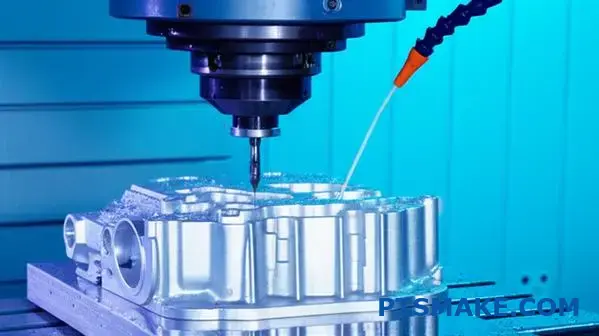
Choosing a CNC machining manufacturer should be viewed as a long-term strategic decision. A partnership built on trust delivers consistent quality, reliability, and collaborative innovation, transforming your supplier from a line item on a spreadsheet into a genuine competitive advantage for your business.
Learn how mastering GD&T can dramatically improve communication with your manufacturer and ensure your parts are made right the first time. ↩
Learn more about the science of measurement and why it is critical for achieving high-precision manufacturing results. ↩
Learn how this production leveling technique helps manufacturers ensure stable, predictable lead times for all clients. ↩
Learn how this principle of structural similarity ensures your design intent is perfectly mirrored in the final part. ↩
Discover the science behind how spectrometry ensures your material’s chemical composition matches engineering specifications. ↩
Learn how this lean manufacturing principle helps optimize production flow and reduce costs in CNC machining. ↩
Click to learn how overcoming supply chain fragmentation can directly boost your project’s efficiency and reduce costly risks. ↩
Learn how aligning manufacturing processes with your partner can reduce waste and shorten your product development cycle. ↩





